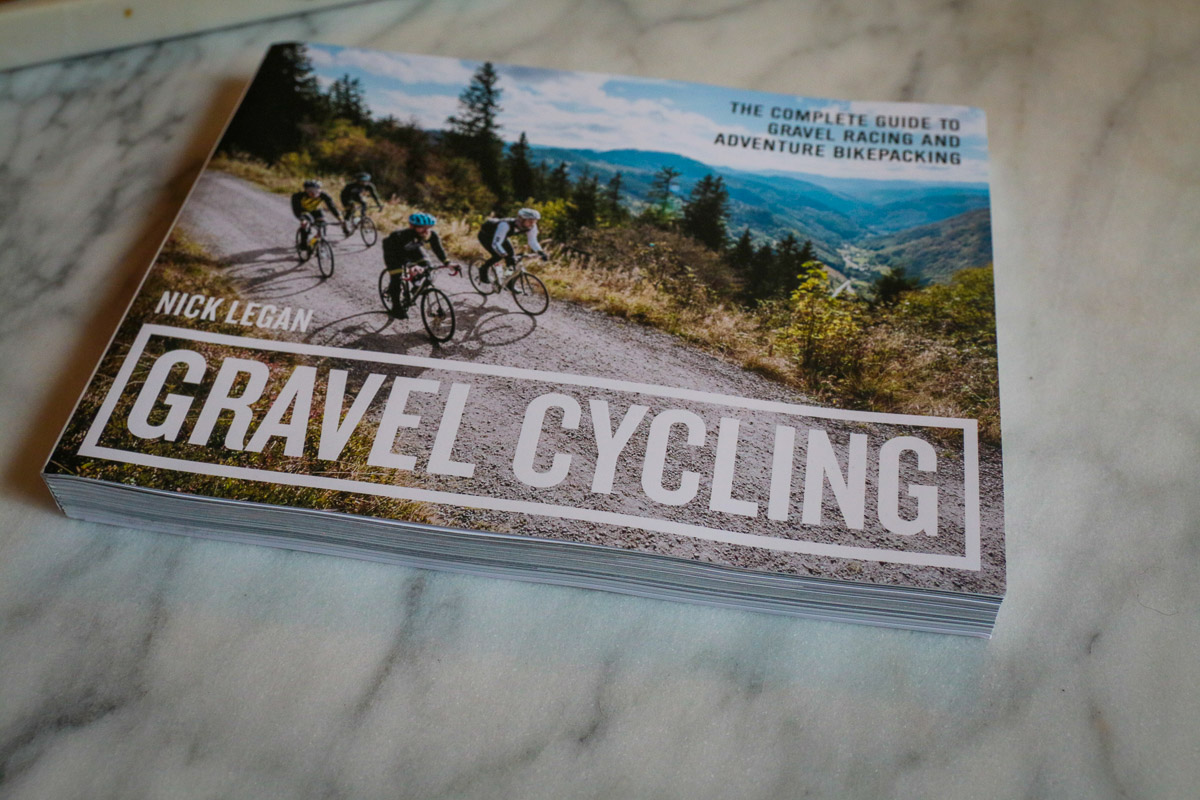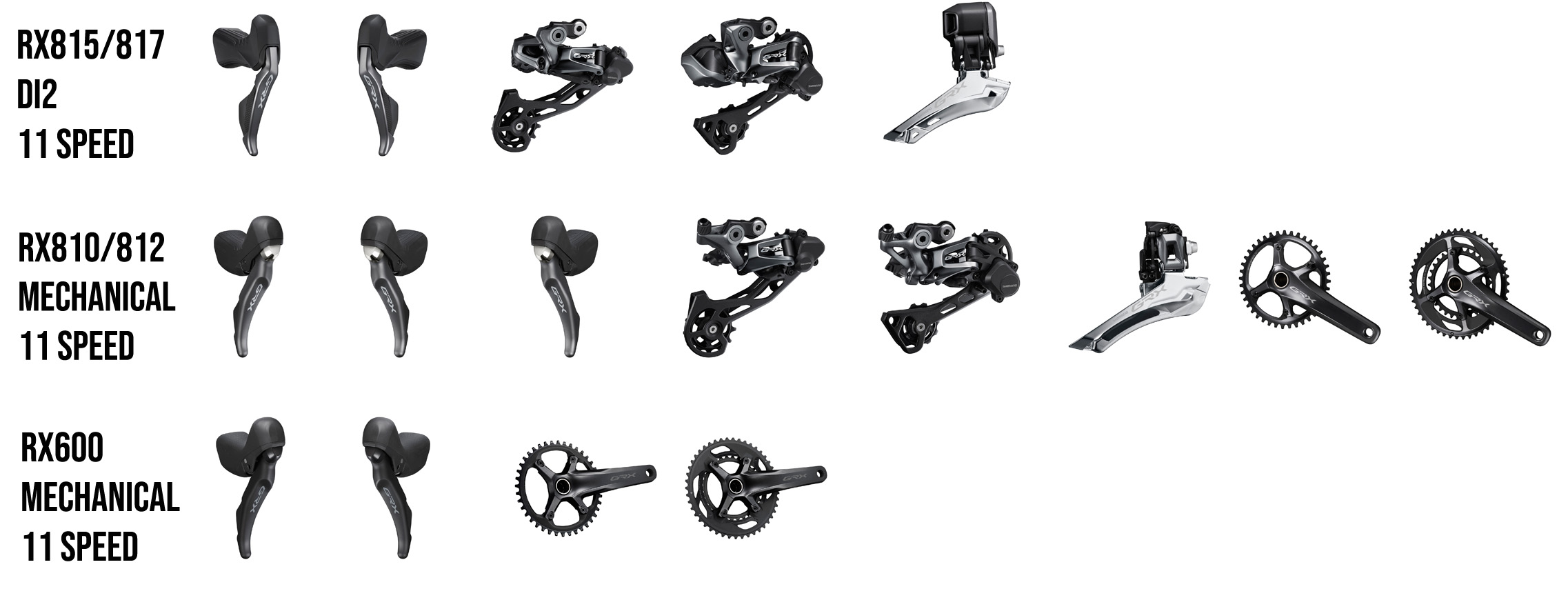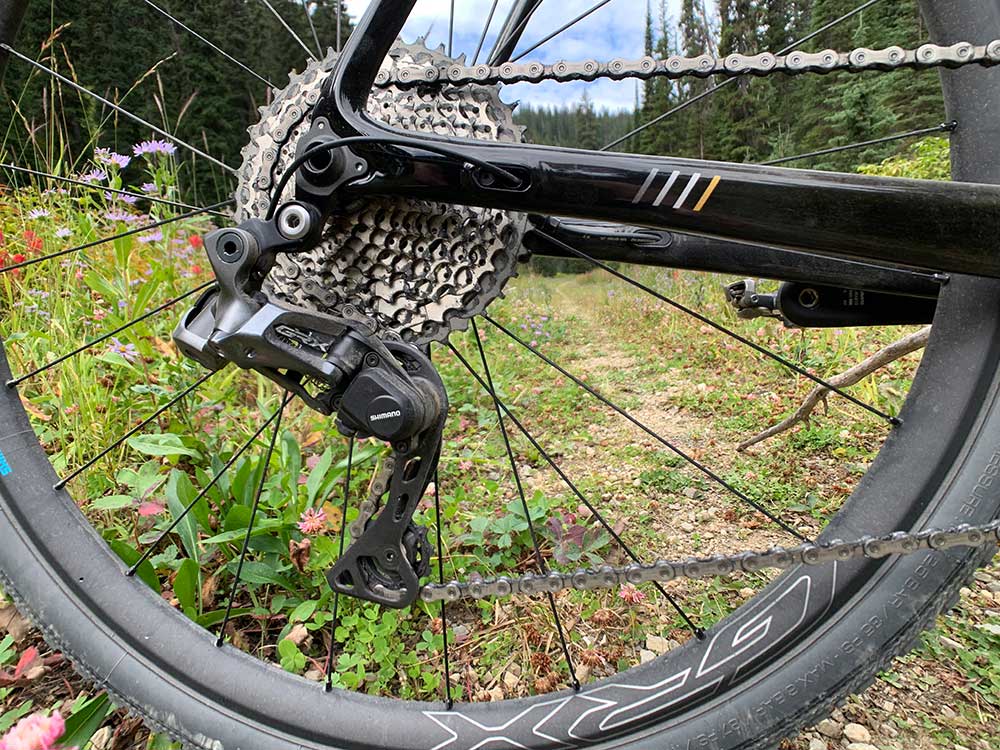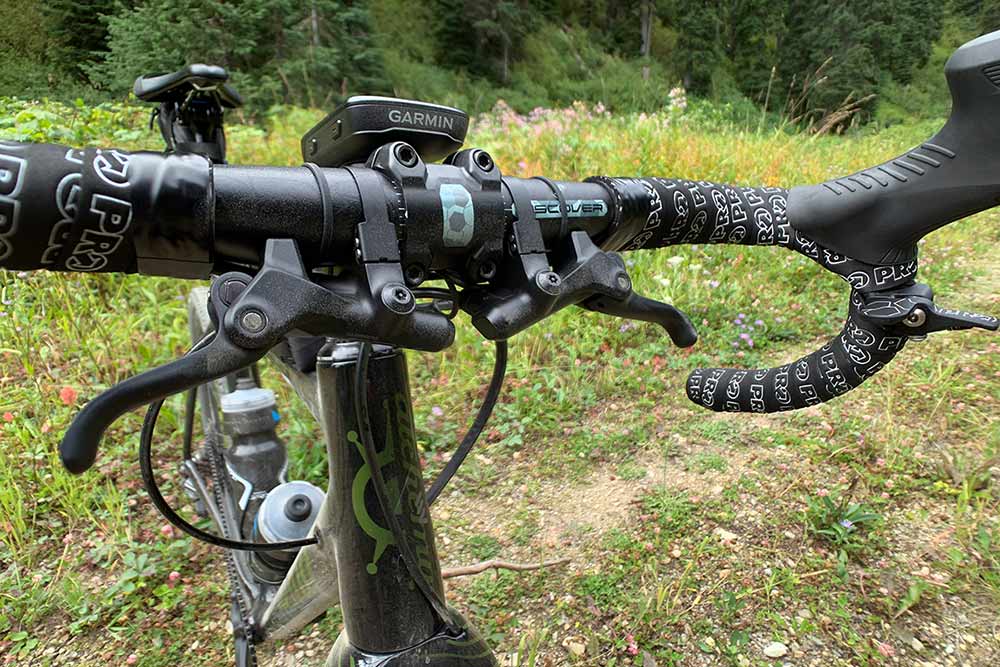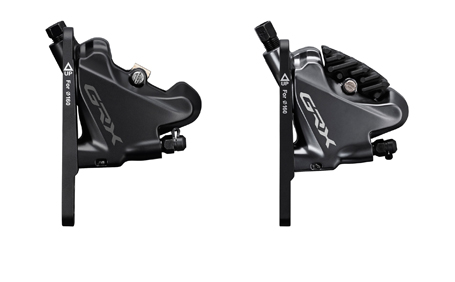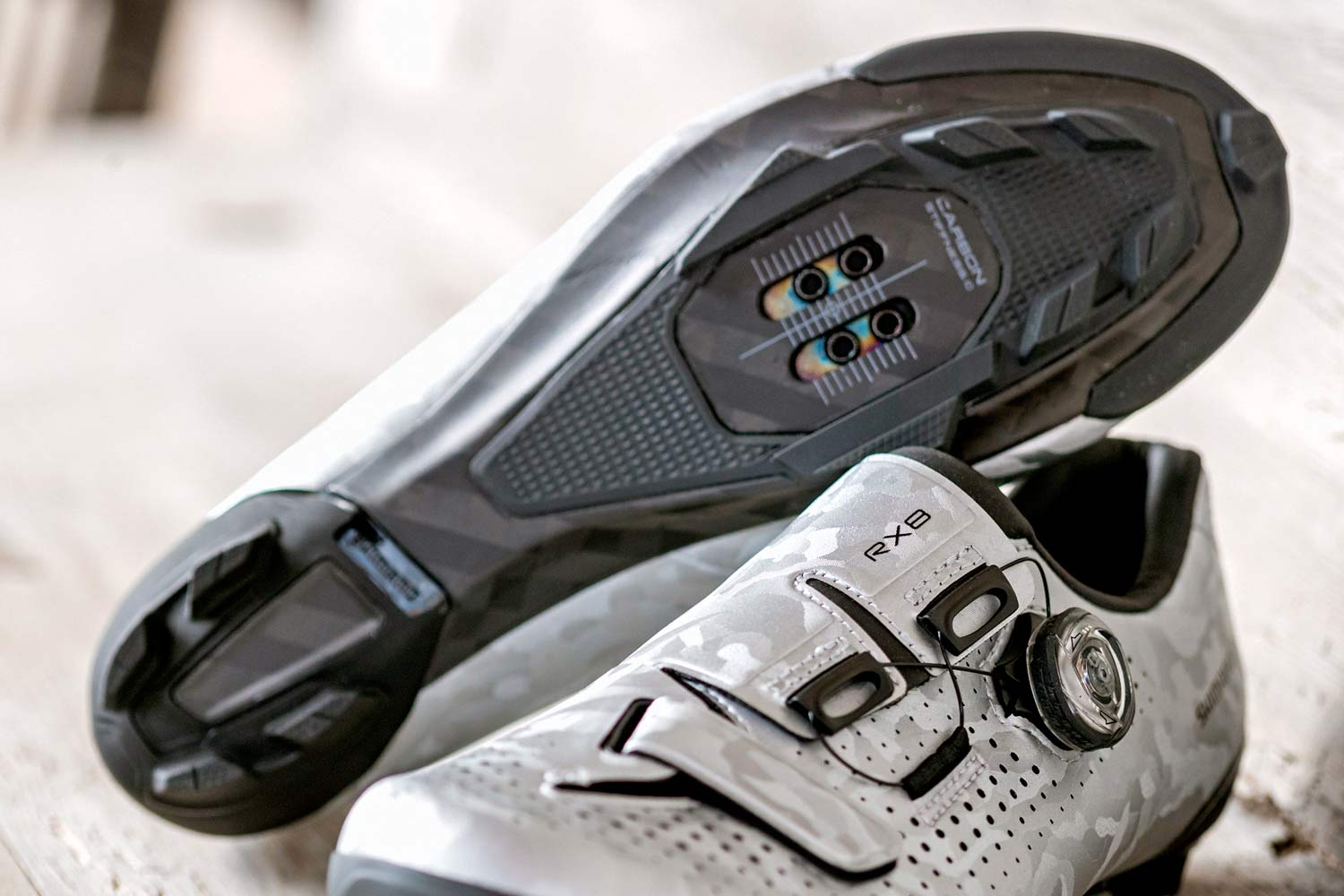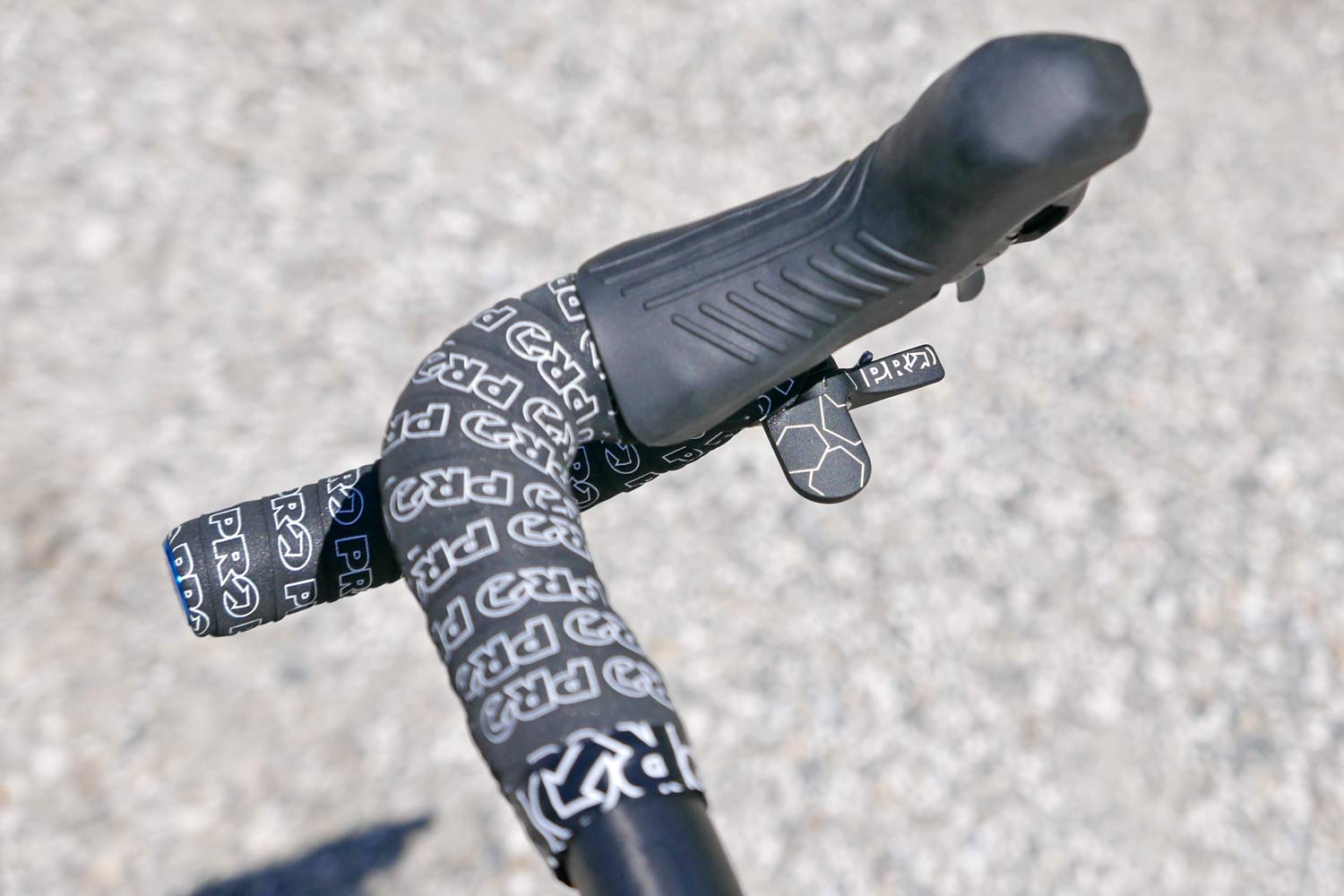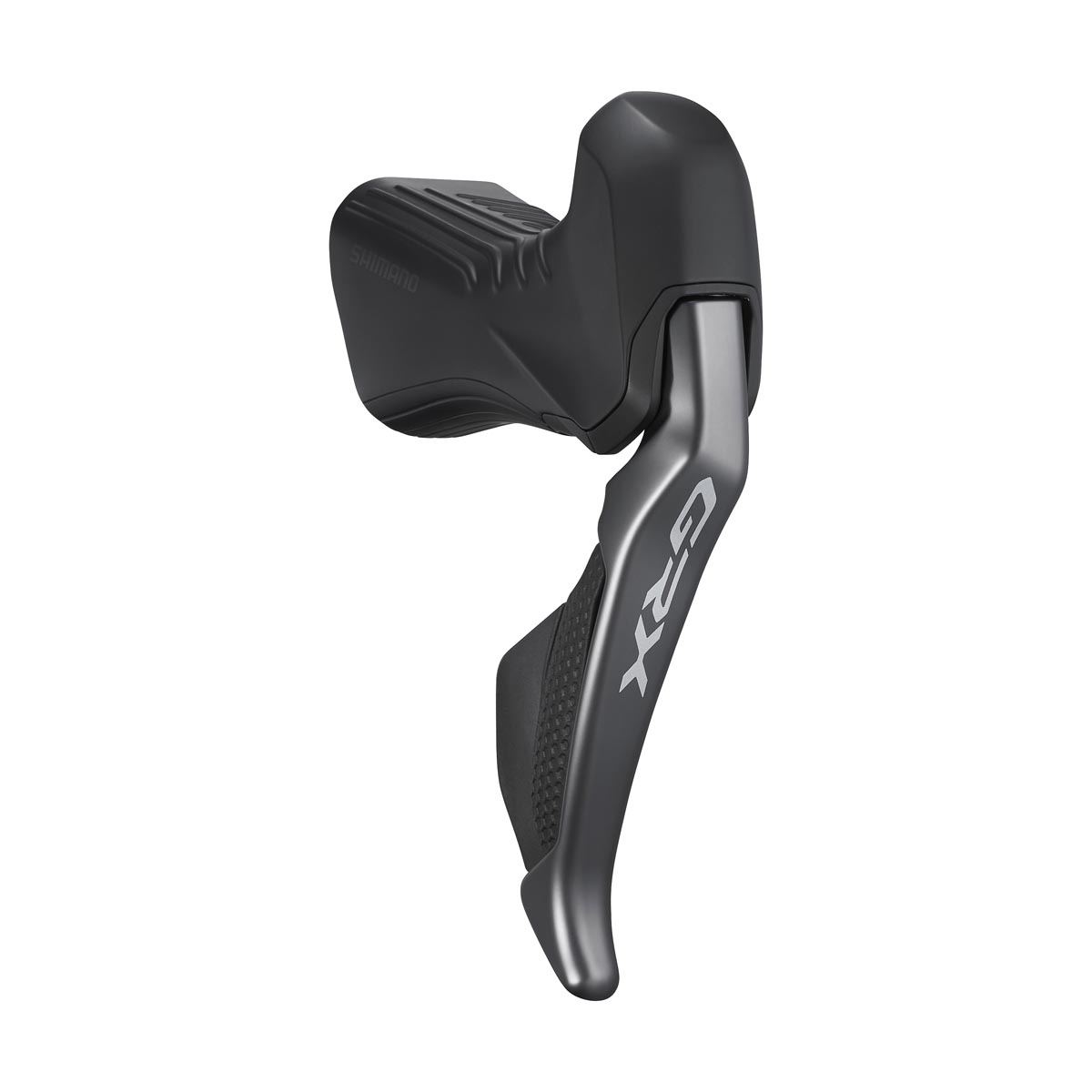We know, there’s no such thing as a stupid question. But there are some questions you might not want to ask your local shop or riding buddies. AASQ is our weekly series where we get to the bottom of your questions – serious or otherwise.
Before being hired as the new Shimano Road Brand Manager, Nick Legan literally wrote the book on Gravel Cycling. Prior to that, his resume includes seven years as a professional mechanic on the pro tour, Technical Editor for VeloNews, and then a turn at the Gear & Road Test Editor for Adventure Cyclist. That is to say that Nick knows his stuff, which makes him a perfect liaison between us and members of Shimano’s Product development team including Dave Lawrence, Chris Jacobson, and Jessie Gascon . It’s no surprise that they have remained typically tight lipped about future product releases, but it seems that Shimano is more open than ever to consumer feedback and were more forthcoming than expected. With that, we’ll kick things off with an introduction from Nick…
“Thank you all for so many fantastic questions. Like you, we love cycling and gravel is such an exciting aspect of it in 2020. Your enthusiasm, technical know-how, and curiosity has produced some exceptional glimpses into what you, modern gravel cyclists, want out of their bikes and their riding.
Shimano established itself as the gravel category leader with Shimano GRX (the world’s first dedicated gravel, cyclocross and adventure group), our RX800 gravel shoes, and PRO’s Discover line of bags and cockpit components. So it’s an area where we’ve spent a lot of time researching, testing, and developing product for riders like you.
Here are a few quick comments based on the questions we received. First of all, as you might expect, we can’t comment on future product, rumors, or product in development.
One common question we received is why we don’t have mechanical shifting, inter-category compatibility; for instance, road shifters with mountain bike derailleurs. Just like you we love to tinker. But as the leading bicycle component manufacturer in the world, we have shifting performance standards that have to be met before we release products to the public. While it would be fun to have a drop bar bike with mountain bike gearing or vice versa, we have to design components that function well 100% of the time. As many of you have seen, Di2 can bridge the gap between our mountain, road, and gravel worlds.
That said, we’ll never make something intentionally incompatible if there’s no technical reason to forbid it. We want to maximize that intercompatibility whenever it meets our internal performance standards. So with those comments made, we’ve made every effort to fully answer your other burning questions! Happy trails.” – Nick Legan, Shimano Road Brand Manager
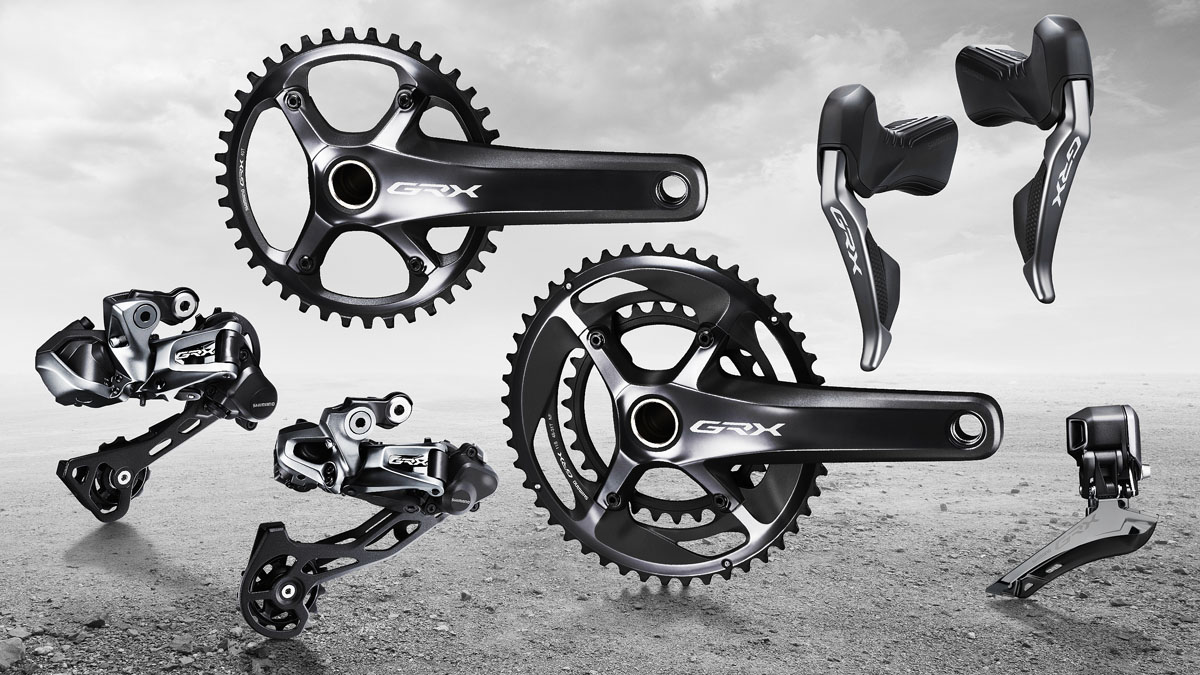
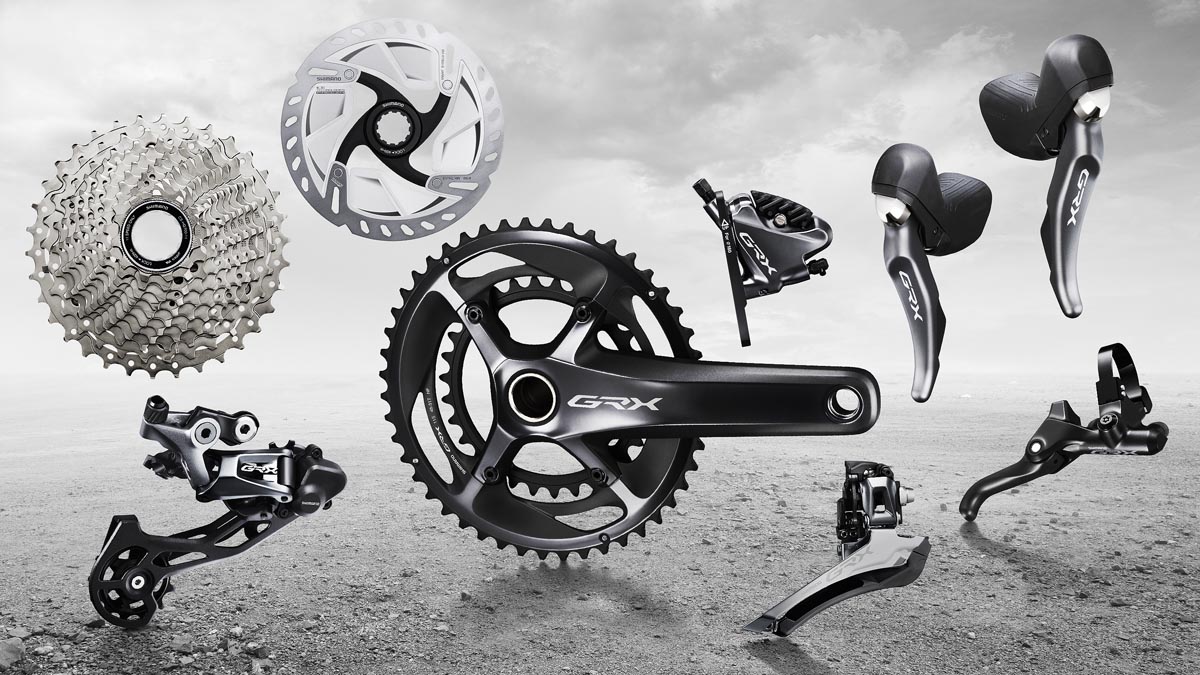
Shimano GRX Gravel Group
When designing the GRX group, what specific features were needed to make it “gravel?” Just gearing options? Is it more durable? Is there any reason why you couldn’t use it on any drop bar bike? – Larry
Shimano: Hey Larry, fantastic question. Gravel means so many things to so many people. For GRX, it meant lower gears, better rough riding ergonomics, 1x and 2x gearing options, and covering a wide range of budgets. We felt strongly that gravel is its own category with its own demands. So we launched GRX with multiple price points so we can cover the widest range of riders.
Depending on how and where you ride, GRX would make a fine option for any drop bar bike. When it comes to road racing, we still think that Dura-Ace and Ultegra are the clear choice. But a lot of people have purchased a second wheelset and use their gravel bikes on the road. Isn’t versatility wonderful? – Dave Lawrence, Shimano Road & Gravel Product Manager
What’s been more popular in terms of the new GRX group – 2x or 1x? – Morgan
Shimano: Morgan, great question. It’s a hard one to answer because 1x vs. 2x is so use-specific. Generally 2x is slightly out-selling 1x. But our goal with GRX was to create versatility and options for riders. So it’s a win-win! – Dave Lawrence, Shimano Road & Gravel Product Manager
Do both of the pulleys on the Shimano GRX 810 series RD have ball bearings or bushing bearings? Or is one ball bearing and the other a bushing? Also why are the top and bottom pulleys different sizes in the 810 RD ? Thanks. – Greg
Shimano: Hello Greg, the RX810, RX815, RX812, and RX817 rear derailleurs have sealed bearings in the pulleys. The 2×11 derailleurs, RX810 and RX815, have larger 13T pulleys to increase the chain capacity required by large front chainring differences. The 1×11 RX812 and RX817 derailleurs have smaller 11T pulleys. All of the Shimano GRX derailleurs have upper and lower pulleys that are the same size. – Dave Lawrence, Shimano Road & Gravel Product Manager
GEARING
Will Shimano come out with a road or GRX mechanical derailleur that can run up to a 40 or 42 cassette in the back to do a mullet build without adapters? Especially since you can do this with Di2. – Efrain
Shimano: Hello Efrain. Both our Shimano GRX RX812 mechanical and RX817 Di2 rear derailleurs can run up to an 11-42T cassette. So you’re covered! – Nick Legan, Shimano Road Brand Manager
Mechanical DEORE XT 1x 12-speed 10-45T with Hyperglide+ is fantastic! Since Shimano doesn’t make a 12-speed XT/XTR Di2 rear derailleur, when can we get 12-speed mechanical/hydro brifters for 1x 12-speed gravel? Did I mention that mechanical 12-speed 10-45T with Hyperglide+ is fantastic? – John
Shimano: John, so glad you’re enjoying Hyperglide+ and our 10-45 cassette. As for future product, please see our intro note above. – Nick Legan, Shimano Road Brand Manager
GRX is a great groupset, but the gearing remains pretty aspirational – a 31 front chainring with a 34 rear cog is still not enough for many of us. Is it possible for Shimano to design and build a rear derailleur that can handle a wide-range double chainring setup with an 11-40 or 11-42 cassette? And is it possible to use the existing GRX double system to do that?
Thanks! – Noah
Shimano: Hello Noah, thanks for the question. We had dozens of them regarding gearing. You’re not alone in requesting lower gears. The one constant is that no one in the gravel/adventure cycling world is looking for harder gears. Shimano GRX was our first foray into the gravel world. In its first generation, it offers the widest range with the lowest gear Shimano has ever produced for drop bar bikes. Your best bet from our current Shimano GRX lineup would be our 2×10 option. With it you can run a 46/30 crank with a 10-speed 11-36 cassette. Please rest assured that we hear you, you’re not alone, and the pursuit of lower gears is ongoing. – Nick Legan, Shimano Road Brand Manager
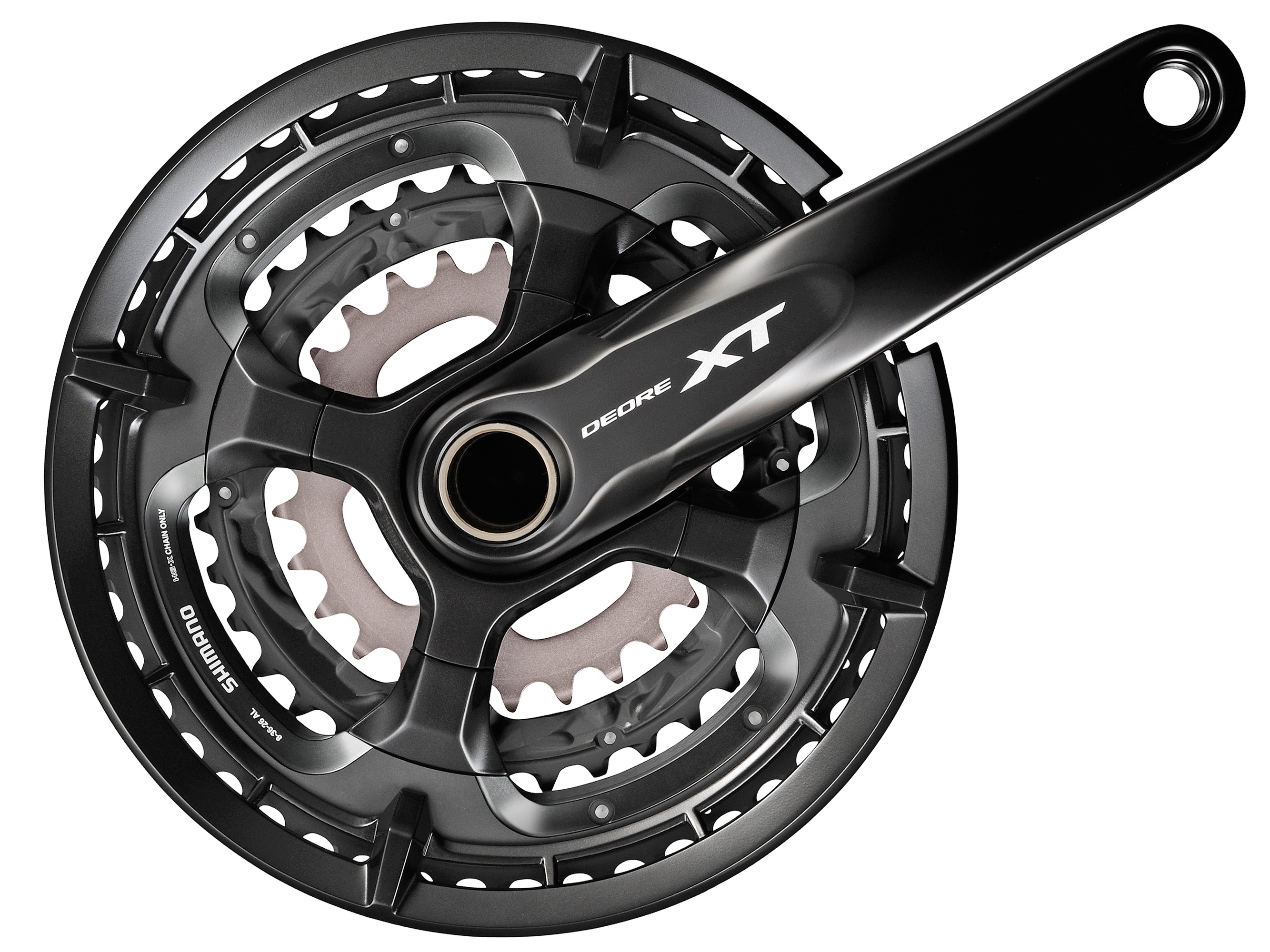
I’ve always felt triple cranksets offer the best of all worlds–gear range, minimized chain deflection, smooth gear ratio transition between rings, etc. Do you ever see a triple returning to high end groupsets like Ultegra or XTR? – Jason
Shimano: Hey Jason, we appreciate all of your points. A triple can offer an exceptionally wide gear range. But the priorities of the market have changed in recent years and we don’t expect to see the return of the triple. Riders are routinely asking for simpler, more user-friendly drivetrain options. Fewer chainrings also increase tire clearance and limit the detrimental effects of cross-chaining. – Dave Lawrence, Shimano Road & Gravel Product Manager
Can I use the GRX 812 (1 x) rear derailleur with the double (2x) front chain ring? If not, why not? – Tyler
Shimano: Hello Tyler, thanks for asking. It’s a little bit complicated. It comes down to rear derailleur capacity. For a 1x drivetrain, the capacity is the difference between the largest cog and the smallest cog (42-11 = 31). For a 2x drivetrain system, the capacity is the difference between the large chainring and the small chainring plus the difference of the largest cog and the smallest cog [(48-31=17) + (34-11=23) = 40].
The RX812 (or RX817 Di2) has a chain capacity of 31T. The RX810 (or RX815 Di2) has a capacity of 40T. So the RX812 isn’t designed to handle all the chain that is required by a 2x system.
The other point of the RX812 is that it is optimized around a cassette range that is wider, namely the 11-40 and 11-42T cassettes. All of our derailleurs are made to maintain a consistent distance between the upper pulley and the cog across the cassette range. This keeps shifting crisp, accurate, and reliable. Using a derailleur with a cassette for which it wasn’t designed could compromise the shifting performance. – Nick Legan, Shimano Road Brand Manager
I’m not sure how to phrase this – but, why a 42T max in the rear? Can we ever hope for a GRX RD that will take a 46 (or 50!!)? – Philly
Shimano: Dear Philly, like we’ve mentioned before, we can’t comment on future products. But like with our 2x options, we’ve also heard a lot of people asking for lower gear options for 1x. Once again, no one is asking for harder gears. Point noted. – Dave Lawrence, Shimano Road & Gravel Product Manager
With the wider chain line used for GRX groupsets, would the 2X version of drivetrain still function properly if I use a GRX crank with a Boost spaced rear hub to allow for more chain clearance and tire width (assuming I build a frame that used a road crank with boost hub spacing)? – Trever
Shimano: Trever, we haven’t tested this scenario and we wouldn’t recommend it. We designed the Shimano GRX 2x drivetrain around a 142mm OLD and a 46.9mm chainline. A 148mm OLD chainline is 52mm. That’s a pretty big difference. – Dave Lawrence, Shimano Road & Gravel Product Manager
We often hear that drivetrain chainlines are based around a specific tire width. Where does Shimano see gravel tire width settling in the future? Is there a specific range that you currently build your drivetrains to? – Peter
Shimano: There are a lot of factors related to tire clearance, not just chainline. But it is one element. We added 2.5 millimeters to GRX to allow frame makers to maximize tire clearance in their designs. – Dave Lawrence, Shimano Road & Gravel Product Manager
Peter, tire size is another tough question. People are looking for more diverse experiences with their bikes. While a 40mm tire looks like the minimum for a gravel bike, the outer limit for width isn’t well determined. But it depends on your specific usage. I expect to see continued segmentation in the gravel market. Gravel race bikes may not need anything larger than a 42mm. But adventure bikes or bikes for bikepacking keep getting wider and wider. It’s hard to predict. – Nick Legan, Shimano Road Brand Manager
I would like to ask about the 50mm chainline on the GRX 1x crank. What is the reason for going so wide? Another large component manufacturer offers a 45mm chainline road / gravel single ring crank. 50mm is going to put quite a bit of extra load on the chain when grinding up steep climbs in the lowest gears, right? Any feedback here is welcome. Also, 40T single is currently the smallest GRX offering, are there plans for 38T in the near future? – Nick
Shimano: Nick, the chainline on the Shimano GRX 1×11 crank is 49.7mm, or 50mm as you rounded up to. This creates more options for frame makers to keep chainstays short and tires wide. It also offers more room for mud and debris. Our excellent chains, cassettes, and chainrings are designed to work especially well while offering those benefits to frame makers and riders. As to chainring options, can’t comment on future product but thanks for the feedback. – Dave Lawrence, Shimano Road & Gravel Product Manager
Hi Shimano, I’m looking to expand the range a little on my 1x GRX810 shifter and GRX812 rear derailleur setup currently with the XT 11-42 cassette. Hoping this isn’t a typo, but according to the Shimano website the 11-46 is apparently compatible. So that would be an option. But an even wider range would be available if it’s possible to use the lovely 11 speed XTR CS-M9110 10-45 cassette.
So before I go splashing a significant chunk of cash on this lovely cassette and a microspline free hub, is the pitch spacing between the gears on the microspline 11 speed XTR CS-M9110 10-45 cassette compatible with the aforementioned combo? Cheers, Jim
Shimano: Cheers Jim. There has been some confusion about the maximum cassette you can use with a GRX RX812 or RX817 rear derailleur. Because these derailleurs were built around the DEORE XT 11-40 and 11-42T cassettes, the DEORE XT 11-46T option is sometimes mistaken as compatible with GRX, but it is not.
As to your second thought on the XTR cassette, unfortunately that’s a no go as well. The CS-M9110 11 speed cassette uses 12-speed spacing so that it’s interchangeable with XTR M9100 drivetrains. It won’t work with other 11-speed drivetrains.
Please consider making the following available as parts of or compatible with GRX:
*Smaller 2×11 rings, say 42×26
*Smaller 1×11 rings 38, 36, (34)
*2×11 RDs that accept 11-42 or larger
*1×11 RDs that accept 11-46/51 cassettes
*New cassette size 11-37, as per HG-800 11-34 except last spider with 28, 32, 37T
*Adaptor to enable 180mm front rotor with flat mount caliper
*Di2 LH shifter with dropper post actuation (RH shifter does 1x or SS)
*1×12 speed HG+ compatible Di2 RD (and/or mechanical RD & shifter) to accept 10-45/51
*12 speed HG+ rings 38, 36, 34
*2×12 everything, including sensible cassette sizes – not 10T or Microspline
Finally, please make the GRX control levers available *without* bundling the brake calipers. There are still quite a few bikes and new frames that use post mount or IS, and being forced to buy calipers that won’t fit isn’t helpful(!). – Stephen
Shimano: Hello Stephen, thanks for sharing your thoughts. You’re not alone in requesting lower gears. We’re at a point where the lines between road, gravel, and mountain bike drivetrains are increasingly blurred. Exciting times to be sure. Regarding 180mm Flat Mount, we are already seeing some frame and fork manufacturers going there. You want a frameset that is designed for the larger rotor. Please also note that you can purchase Shimano GRX levers individually or as a pair without calipers. – Nick Legan, Shimano Road Brand Manager
Why do road and mountain bike drivetrains have different cable pulls? Can we not have similar cable pull ratios across all shifting components, like SRAM Exact Actuation or older Shimano components? – Jacob
Shimano: Jacob, Shimano aims to produce the highest quality shifting for each application. Discipline specific designs lets us do just that. GRX has allowed us to bridge these two worlds in a way that was not possible a few years ago. – Dave Lawrence, Shimano Road & Gravel Product Manager
BRAKES
Hi Shimano Gods, I am planning to build a gravel bike around a custom titanium frame. I weigh 80 kg and I want to be able to descend long mountain passes in the alps even with a lot of weight in my bags. For this, I would really love 180mm brake rotor availability for flat mount brakes. Why is this not available? I think the use case of 140mm brake rotors is much smaller, compared to 180mm rotors. Basically all big manufacturers spec 160/160 rotors and some are beginning to build their own versions for 180mm brake rotors (BMC URS, Specialized Diverge, Rose Backroad etc.)
PS: the new MTB flat mount rear brake calipers BR-M8110 are exactly what I would be looking for 😉 Just add the brake calipers for the front please and tell us, how exactly the 160/180mm flat mount option, mentioned in the technical handbooks, is to be implemented. Thanks for your answer and consideration! – Hans
Shimano: Hello Hans. Thanks for the kind comment. First question, have you had your new frame built yet? If not, we do have a frame spec option that allows for 180/160mm rotor options instead of 160/140mm. You would be able to run a Shimano Flat Mount hydraulic disc brake and manage your speed and braking system heat the way you’ve always dreamed. For your rotors, grab a set of XTR or XT’s as they are offered in 180mm.
For the fork you’ll need to confirm with the manufacturer that it is designed with the 180/160mm Flat Mount standard. – Nick Legan, Shimano Road Brand Manager
Hello, I would like to know if Shimano has plans to continue maintaining the Dura-Ace group with the option of brake on the rim, even with the possible launch of 12 speeds? I hope it’s in the plans. – Theotonio
Shimano: Hello Theotonio, we can’t comment on future product, but thanks for sharing your opinion. To your point, there are still a lot of road bikes in use that are rim brake equipped. So it’s important to consider those numbers as we move forward. – Nick Legan, Shimano Road Brand Manager
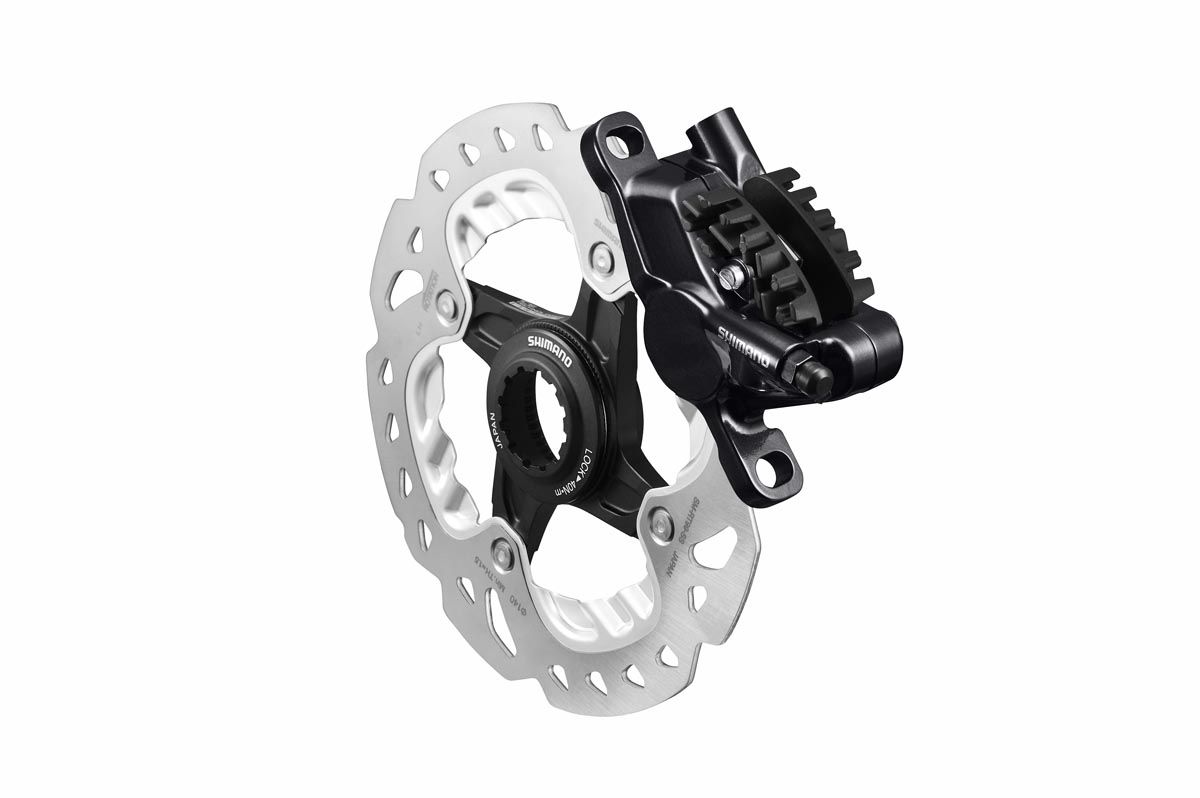
What is the difference between GRX brake caliper models? Are there any post mount brake caliper options for gravel/road bikes? If nothing specific, will Shimano post mount MTB calipers work with any of your drop bar style levers? – Omar
Shimano: Hello Omar, all of our GRX brake calipers are hydraulic Flat Mount offerings. The RX800 series brakes use a ceramic piston while the RX400 calipers use a resin piston. The RX800 caliper is a bit lighter as well. Both are compatible with our resin and metal pads. Both resin and metal pads are offered with or without cooling fins. If you have a post-mount frame and fork, you still have options though. Our RS785 calipers pair nicely with GRX levers. If you want a bit more bling, check out a pair of XTR BR9020 calipers. – Dave Lawrence, Shimano Road & Gravel Product Manager
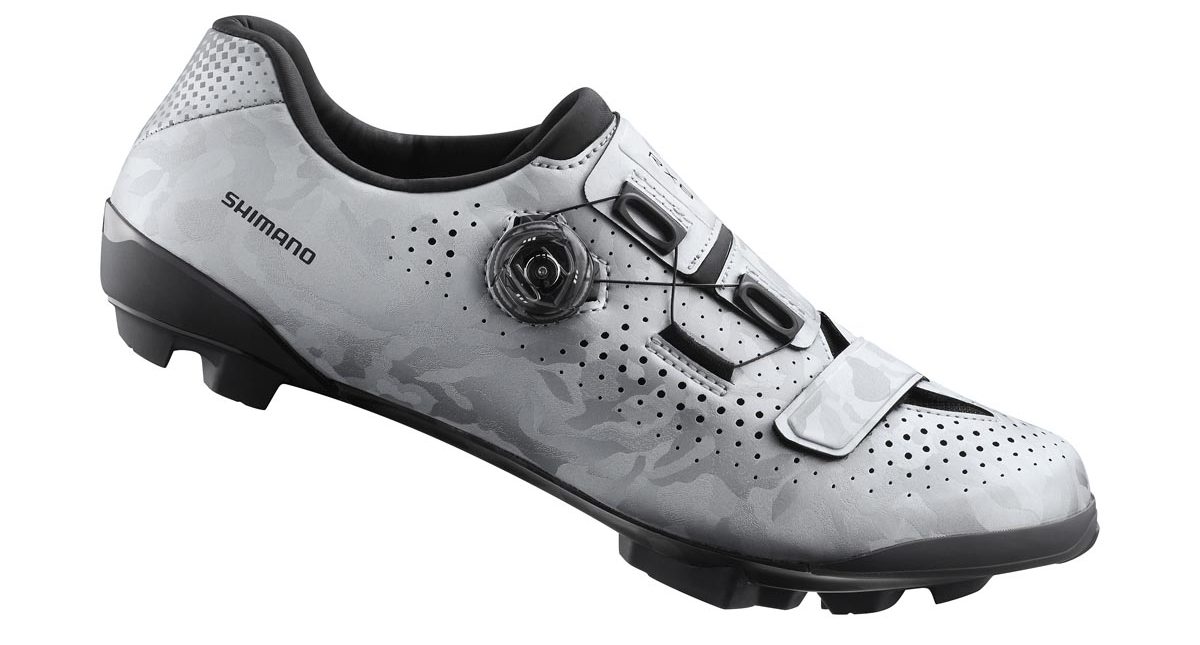
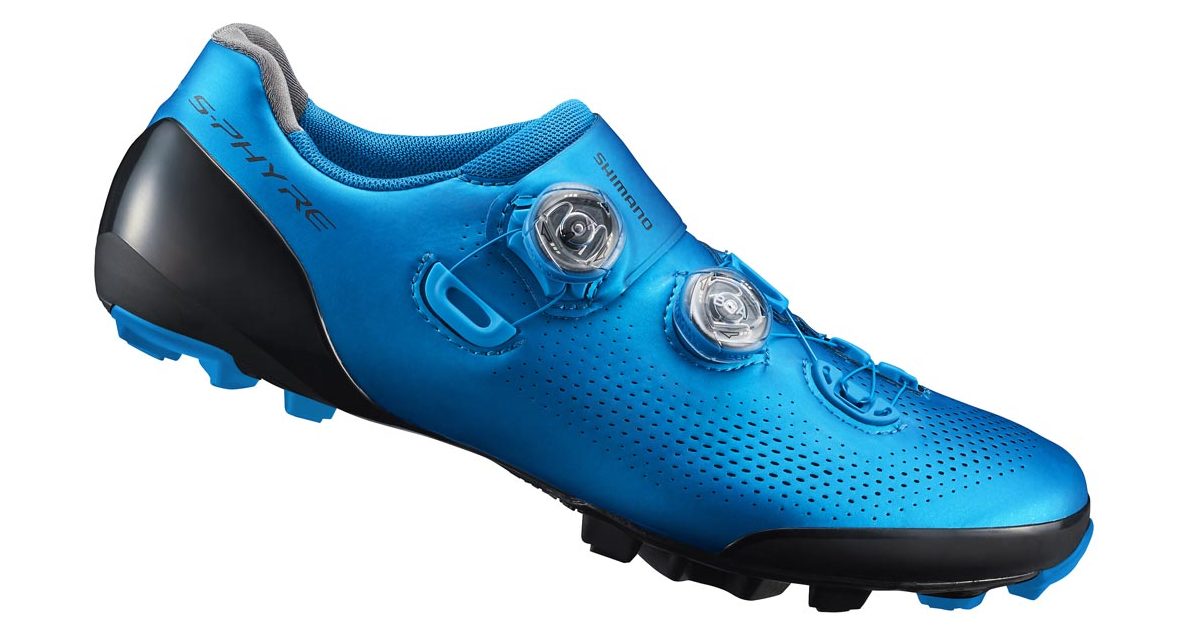
SHOES AND DROPPER POSTS
What makes a Shimano gravel shoe different than a Shimano XC mountain bike shoe? Do we really need both? – Steve
Shimano: Our XC9 shoe is specifically targeted for 100% off-road riding environments in all conditions, our main priorities are maximum pedaling efficiency and optimum hike-ability when the going gets tough on trails or a rider encounters barriers and run-ups on the race course. Pedaling efficiency is addressed with stiff outsoles, tall heel cups and a solid, but comfortable upper fit to minimize foot movements during hard efforts.
The RX8 gravel shoe is basically a lightweight road race-type of shoe with minimal lugs and protection. Specifically targeted for gravel, aka “mixed terrain” racing, these cyclists demand maximum pedaling efficiency, so not only is a rigid carbon sole featured, we utilize TPU (thermos plastic urethane) lugs to enhance the shoe-pedal interface. TPU offers minimal compression and the rock-solid feedback roadies expect. TPU is also substantially lighter than rubber and we feature a very minimalistic outsole lug pattern. On the upper we also have minimal armor protection, as the likelihood of a rock garden environment in a gravel race is very rare (unless Sam Ames has something up his sleeve at the Rock Cobbler). The overall weight of the RX8 rivals some of the high end road racing shoes of our competitors. – Jessie Gascon, Shimano Soft Goods Product Manager
Are there any plans to introduce a Di2 controlled dropper post? – Sean
Shimano: Hello Sean, we can’t comment on any future or hypothetical products. – Nick Legan, Shimano Road Brand Manager
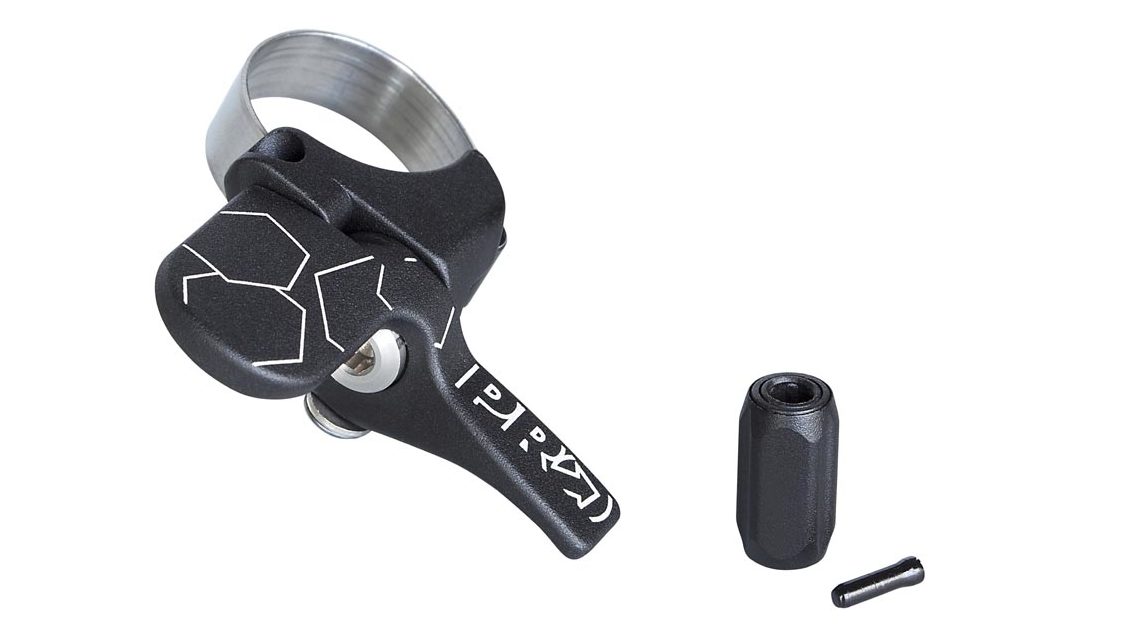
When and where can I get the drop bar dropper post lever by itself? I don’t need another post, but the lever looks great and I want one. – John
Shimano: Hello John, your local bike shop can order up an ST-RX810-LA to actuate any dropper post that anchors or crimps the cable at the post. Alternatively, check out PRO’s drop bar dropper lever, PRAC0213. It is compatible with dropper posts that require the lever to secure the cable and installs independently of your brake lever. You can then actuate your dropper from both the hoods and the drops. It works really nicely. –Chris Jacobson, PRO Bike Gear Product Manager
If you wanted to run a dropper post on a GRX Di2 gravel build, are there other options for where to put the battery other than the seatpost? – Rick
Shimano: Hello Rick. There are options, but many of them are frame dependent. It will involve some creativity but most important is that the battery is secure. Sorry we can’t be more specific than that. – Nick Legan, Shimano Road Brand Manager.
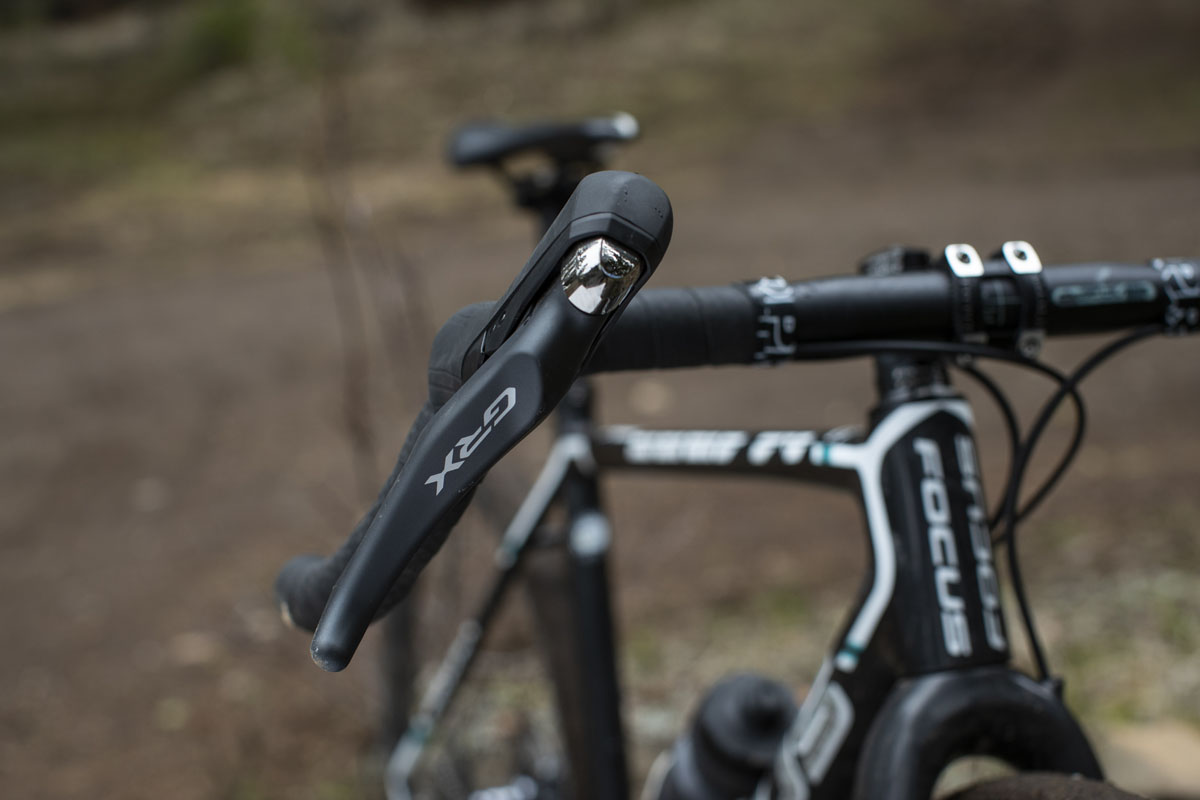
Is there a specific bar drop flare angle that works best with the new GRX shifters? Wondering if the levers were designed with a certain flare angle in mind, or if they were designed for any particular bar? Along those same lines, why is the GRX Di2 lever design so radically different? Is it just because you didn’t have to design it around the pivoting shift lever design? – Michael
Shimano: Michael, we didn’t design the GRX levers around a specific flare or bar. But we certainly took note of the trends towards flared bars for mixed surface riding. Handlebar comfort is highly personal so we design our levers to work with a wide array of angles and shapes.
Dura-Ace and Ultegra Di2 levers are the gold standard for ergonomics and comfort in the road world. For the GRX RX815 lever, we created the new standard for ergonomics, comfort and security for gravel riding. That’s why the hood shape is so different.
Our current mechanical shift, hydraulic brake road levers already offer a larger hood peak. We find that they are wonderfully secure for gravel riding. So we use the same hood shape on our GRX mechanical levers. But the brake lever blade shape and surface treatment is different. Both the 800 series Di2 and mechanical shifters have a flattened front and rubberized surface for confident braking from the hoods and the drops. – Nick Legan, Shimano Road Brand Manager.
Dear Shimano, With GRX Di2 released I have had a number of customers and coworkers eager to install the new “Predator” style shifters on their Ultegra Di2 groupset. But the hidden button that used to be on top of the shifter hood is now inboard for GRX. Lots of people are now bummed that is hard to index there and/or find it. Any ideas on how to make that button more usable, or why did you move from the top of the shifter hood? That button was about 30% of why I decided to get Di2 instead of competitors honestly and now it’s gone! – Adam
Shimano: Howdy Adam, our intent with the relocation of the third button was to make it more accessible while remaining in a secure position on the hoods. This is especially important when riding on gravel and dirt roads. So the button is still very much there, but it may take a few rides to get used to its new location. – Dave Lawrence, Shimano Road & Gravel Product Manager
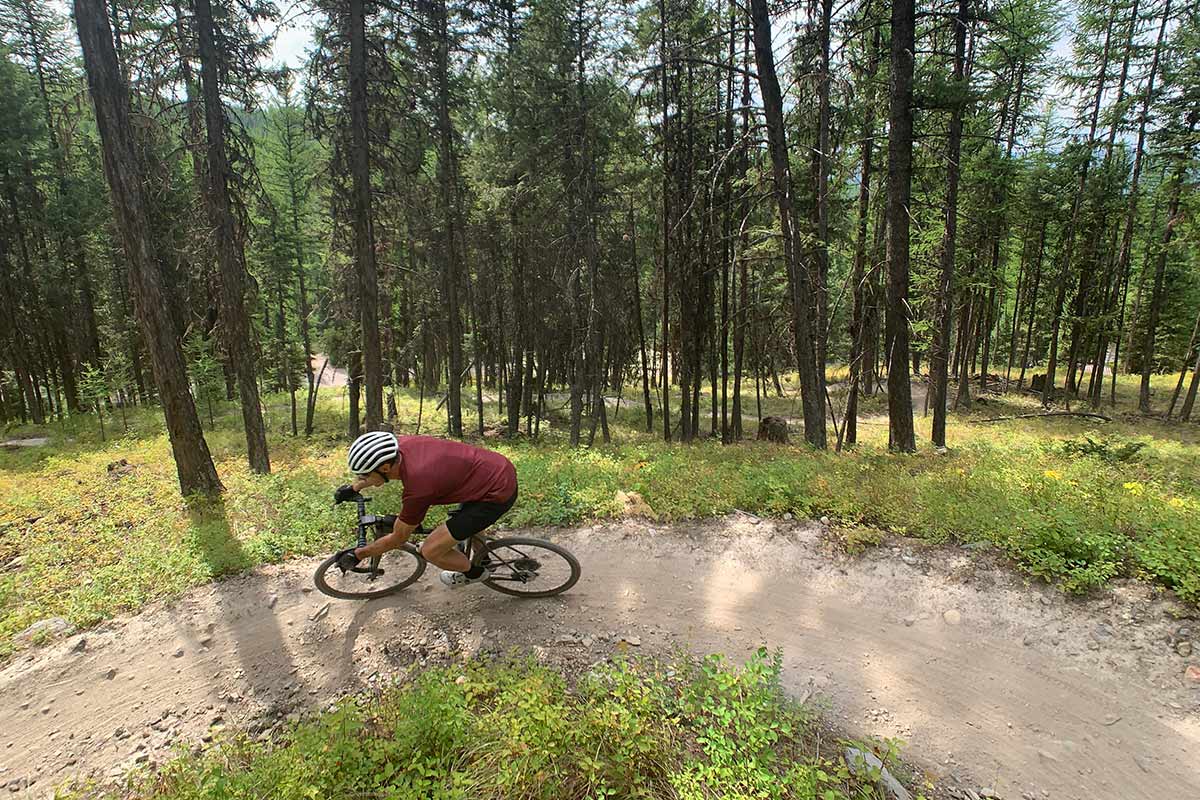
GRAVEL = VINTAGE XC?
Gravel bikes are just old school XC hardtails with drop bars. Why or why not? – Chad
Shimano: Chad, you’re not alone in asking a question in this vein. I would argue the differences are large. While I love a vintage cross-country bike as much as the next fella, I love advancements like tubeless tires, disc brakes, modern shifting, and today’s frame designs. But to your point, I think the sense of adventure and exploration that gravel offers aligns perfectly with the early days of mountain biking. – Nick Legan, Shimano Road Brand Manager.
Got a question of your own? Click here to use the AASQ form to submit questions on any cycling-related topic of your choice, and we’ll get the experts to answer them for you!

